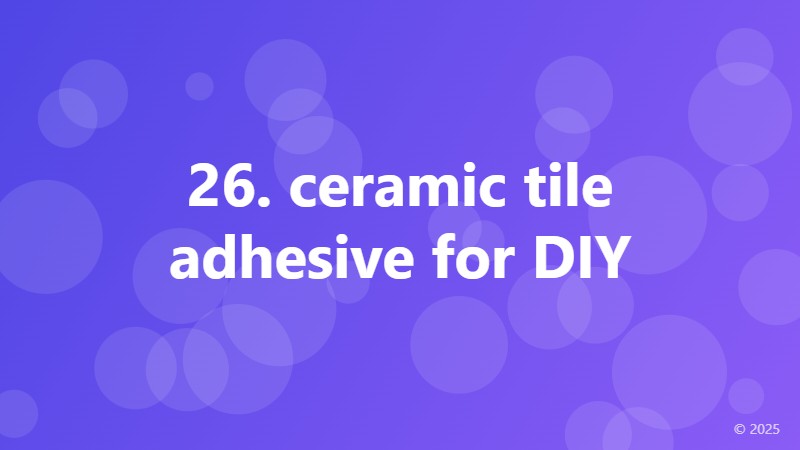26. ceramic tile adhesive for DIY

Why Ceramic Tile Adhesive is a Game-Changer for DIY Projects
Ceramic tile adhesive is a must-have for any DIY enthusiast looking to add a touch of elegance and sophistication to their home decor. With its exceptional bonding strength, ease of application, and versatility, this adhesive has become a go-to solution for many homeowners and DIYers. In this article, we'll delve into the world of ceramic tile adhesive and explore its benefits, types, and application tips for a successful DIY project.
Benefits of Ceramic Tile Adhesive
Ceramic tile adhesive offers a range of benefits that make it an ideal choice for DIY projects. Some of its key advantages include:
Exceptional bonding strength: Ceramic tile adhesive creates a strong bond between the tile and the substrate, ensuring a long-lasting and durable finish.
Easy to apply: The adhesive is simple to apply, and its consistency makes it easy to spread and level.
Versatility: Ceramic tile adhesive can be used on a variety of substrates, including concrete, wood, and drywall.
Moisture resistance: The adhesive is resistant to moisture, making it perfect for areas prone to water exposure, such as bathrooms and kitchens.
Types of Ceramic Tile Adhesive
When it comes to choosing the right ceramic tile adhesive for your DIY project, there are several types to consider. Some of the most popular options include:
Acrylic-based adhesive: A popular choice for most DIY projects, acrylic-based adhesive offers a strong bond and is easy to clean up.
Epoxy-based adhesive: Ideal for areas subject to high traffic or heavy loads, epoxy-based adhesive provides exceptional strength and durability.
Cement-based adhesive: A cost-effective option, cement-based adhesive is suitable for most ceramic tile installations.
Application Tips for a Successful DIY Project
To ensure a successful DIY project, follow these application tips:
Prepare the substrate: Make sure the surface is clean, dry, and free of any old adhesive or debris.
Apply the adhesive: Use a notched trowel to apply the adhesive, holding the trowel at a 45-degree angle.
Lay the tile: Press the tile firmly into place, using a level to ensure it's straight.
Grout the tile: Wait 24 hours before grouting the tile, using a grout float to spread the grout evenly.
By following these tips and choosing the right ceramic tile adhesive for your DIY project, you'll be able to achieve a professional-looking finish that will last for years to come. So why wait? Get started on your DIY project today and experience the benefits of ceramic tile adhesive for yourself!